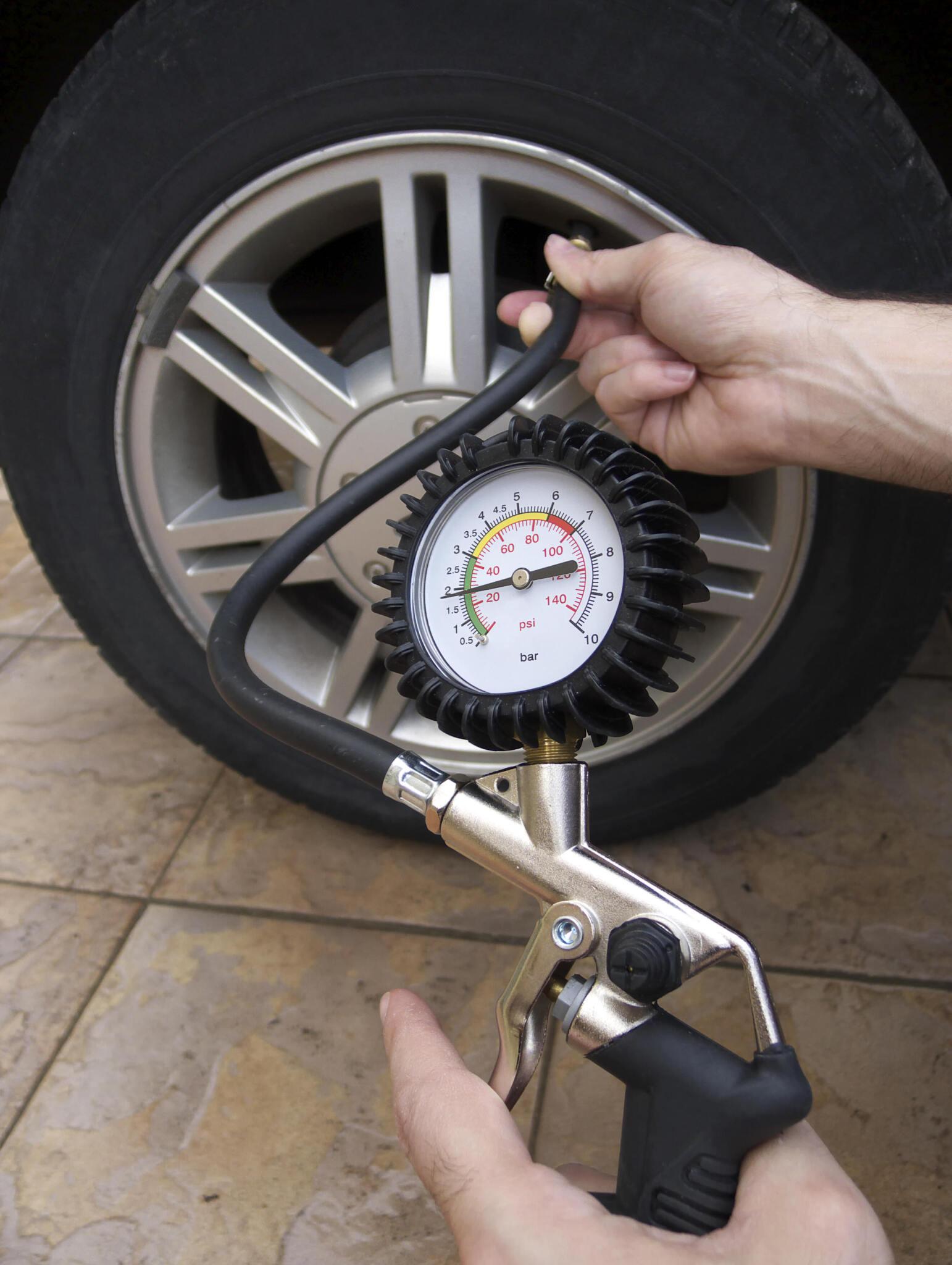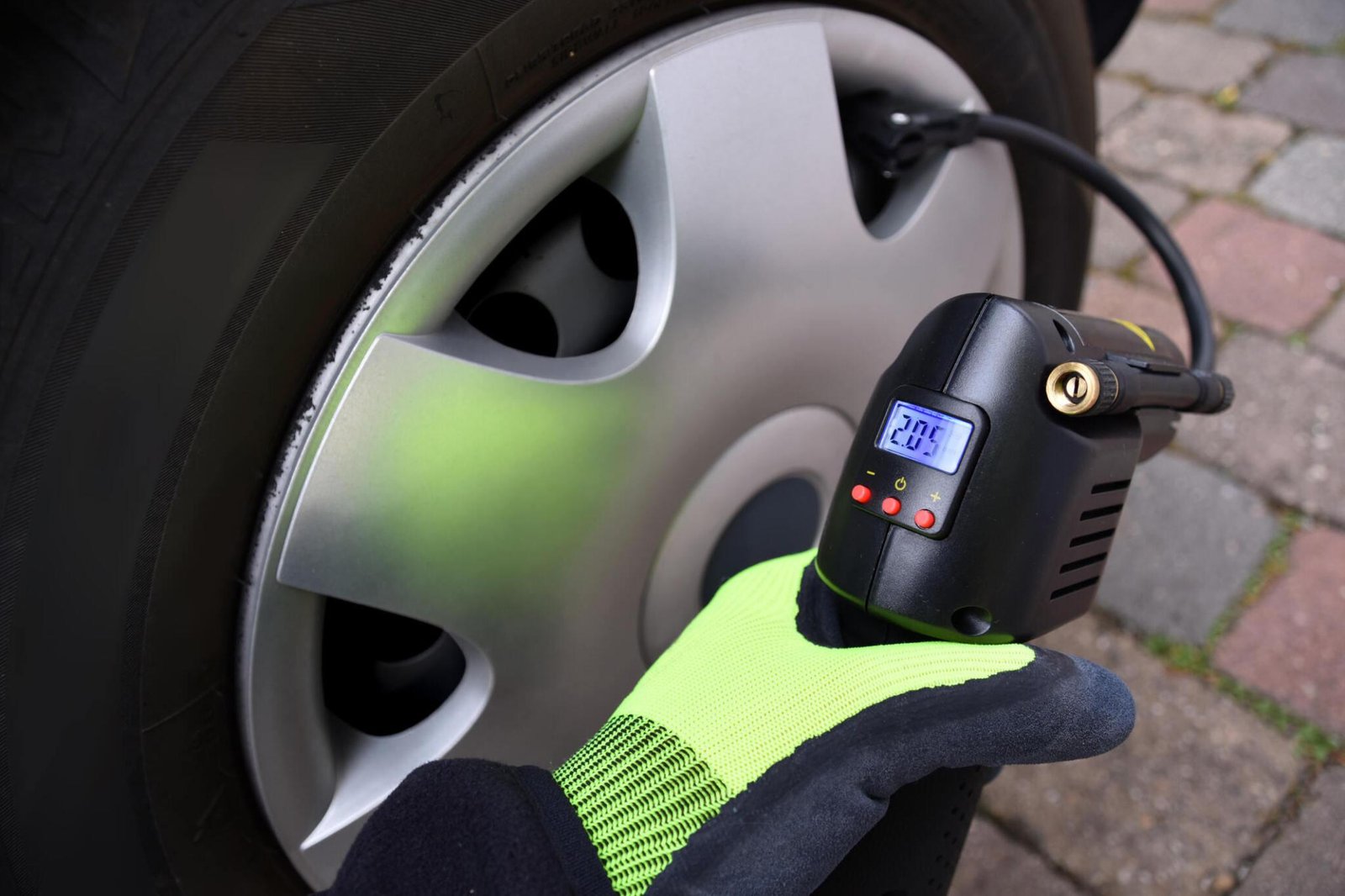Last Updated on August 2, 2024
Introduction to Tire Influence on Gas Mileage
The relationship between tires and a vehicle’s fuel efficiency is an area of automobile performance that is sometimes disregarded. Understanding how tires affect the gas economy is critical for drivers who want to improve their vehicle’s performance while reducing fuel costs. This article digs into how tires affect gas mileage, thoroughly reviewing this essential aspect of vehicle performance.
Overview of Tire Impact on Vehicle Performance
Tires are the only part of a vehicle that makes direct contact with the road, making their influence on vehicle performance important. How tires can affect a vehicle’s gas usage include:
- Rolling Resistance refers to the energy required to keep a tire moving steadily. Lower rolling resistance means the engine doesn’t have to work as hard, leading to improved fuel efficiency. Tires with high rolling Resistance require more energy, thus consuming more fuel.
- Tire Pressure: Underinflated tires have a broader contact area with the road, resulting in increased rolling Resistance. Properly inflated tires improve fuel efficiency by reducing needless drag.
- Tire Pattern and Depth: Tires with deep treads or significant tread patterns commonly seen in off-road and winter tires can increase Resistance by using more gasoline.
- Tire Weight: Heavy tires demand more energy to turn, directly affecting fuel economy. Lightweight tires contribute to improved fuel economy.
- Tire Size: Larger, more expensive, and heavier tires can reduce fuel economy. Vehicles using larger tires than the manufacturer’s suggestion may have lower MPG.

Importance of Understanding Tire and Fuel Efficiency Relationship
Recognizing the relationship between tires and fuel efficiency is crucial for several reasons:
- Cost Savings: By choosing the right tires and maintaining them properly, drivers can reduce fuel consumption, leading to notable cost savings over time.
- Environmental Impact: Improved fuel efficiency leads to lower greenhouse gas emissions. Choosing eco-friendly tires and keeping proper tire pressure are simple but effective methods to help environmental conservation.
- Vehicle Performance and Safety: Tires designed for fuel efficiency often improve vehicle handling and safety. This includes ensuring proper tire pressure and tread depth and choosing the right tire for specific driving conditions.
- Informed Choices: Understanding the effect of tires on fuel efficiency helps consumers make the right decisions when buying tires and vehicles. It also guides them in adopting driving habits that maximize fuel economy.
Basic Concepts of Tire Design and Fuel Economy
The design of a tire plays a vital role in determining a vehicle’s fuel economy. Each aspect, from the type of tire to its tread pattern and size, explains how efficiently a car consumes fuel. This article shows the basic concepts of tire design and their impact on fuel economy.
Understanding Tire Types and Their Characteristics
There are several types of tires, each designed for specific conditions and driving needs, which can influence fuel efficiency:
- All-Season Tires: They are designed to perform well in various conditions, including wet roads and light winter driving. They typically have moderate tread depths and patterns, balancing grip and fuel efficiency.
- Performance Tires: They are designed to provide a pleasant ride with good handling. They often have less rolling resistance than performance tires, making them more fuel efficient.
- Eco-Friendly Tires: Eco-friendly tires are specifically designed to increase fuel efficiency. They have low rolling resistance and are often made with unique rubber compounds that help save fuel.
- Winter Tires Are designed with deeper treads and specific tread patterns to provide better traction in snow and ice. However, these characteristics can lead to higher rolling Resistance and lower fuel economy when used in normal driving conditions.
The Role of Tire Tread and Pattern in Fuel Efficiency
The tread design of a tire significantly impacts its rolling Resistance and, consequently, fuel economy:
- Tread Depth: It has deeper treads, provides a better grip, especially in wet conditions, and can increase rolling Resistance. Shallow treads are generally more fuel-efficient.
- Tread Pattern: Tires with complex or aggressive tread patterns, like those on off-road or winter tires, can create more Resistance. A more straightforward tread pattern is often more conducive to reduced rolling Resistance and better fuel economy.
- Tread Compound: The tread’s material composition might affect fuel efficiency. Softer compounds offer better grip but may increase rolling Resistance. More complex compounds may last longer and have lower rolling Resistance, resulting in higher fuel efficiency.
Tire Size and Width: Balancing Efficiency with Safety
The size and width of a tire are essential factors in fuel efficiency:
- Larger Tires: Bigger tires can affect the fuel economy as they often weigh more and have excellent rolling Resistance. However, they can provide better stability and handling.
- Wider Tires: While they offer more grip and better handling, wider tires have a larger surface area in contact with the road, leading to increased rolling Resistance and lower fuel efficiency.
- Optimal Tire Size: It is crucial to use the tire size recommended by the vehicle’s manufacturer. Deviating from this can affect fuel economy, handling, and safety.
Physics Behind Tires and Fuel Consumption
The unclear link between tires and fuel economy is based on physics principles. Understanding this link is critical to increasing vehicle efficiency and lowering fuel costs. This article discusses three essential aspects: rolling Resistance, tire pressure, and tire weight, and how these affect a vehicle’s miles per gallon (MPG).
How Rolling Resistance Affects MPG
Rolling Resistance is a primary factor in determining a tire’s impact on fuel consumption. It refers to the energy lost due to the tire’s deformation as it rolls over the road surface. Here’s how it affects MPG:
- Energy Loss: When a tire rotates, it deforms and releases energy as heat. This energy loss, known as rolling Resistance, takes more power from the engine, increasing fuel consumption.
- Tire Composition and Structure: A tire’s material and structure determine its flexibility and, thus, its rolling Resistance. Softer compounds with flexible side walls tend to have higher rolling resistance.
- Surface Contact: Tires with a more extensive contact area with the road (more comprehensive or under-inflated) have higher rolling Resistance, which reduces fuel economy.
- Improving Efficiency: Proper tire design and material can significantly improve fuel efficiency by reducing rolling Resistance. For example, low-rolling-resistance tires are designed to minimize energy loss and increase MPG.
The Impact of Tire Pressure on Fuel Economy
Tire pressure plays a crucial role in the overall efficiency of a vehicle:
- Under-Inflation: Under-inflated tires have a larger contact area with the road, increasing rolling Resistance and thus requiring more energy (fuel) to move the car.
- Over-InflatioResistancever-inflated tires may reduce rolling Resistance, leading to uneven tread wear and potentially hazardous driving resistance.
- Optimal Pressure: Maintaining the manufacturer-recommended tire pressure is vital. It balances low rolling Resistance and safety, optimizing fuel efficiency.
- Regular Checks: Changing tire pressure is a simple yet effective way to improve fuel economy.
Tire Weight and Its Effect on Vehicle Efficiency
The weight of a tire directly impacts a vehicle’s fuel efficiency:
Increased Weight and Energy Use: Heavier tires require more energy to accelerate and decelerate, leading to higher fuel consumption.
- Moment of Inertia: A heavier tire increases the wheel’s moment of inertia, making it harder to start and stop the wheel’s rotation, thus consuming more fuel.
- Lightweight Tires: Light tires can reduce the vehicle’s weight and improve fuel efficiency.
- Balancing Weight with Performance: While lighter tires are more fuel-efficient, balancing weight with other performance factors like durability and grip is essential.
Comparative Analysis of Different Tires
Selecting the correct type of tire for a vehicle can affect fuel efficiency. This article explains different tire types and focuses on their impact on fuel consumption.
All-Season vs. Performance Tires: A Fuel Efficiency Perspective
All-season tires generally offer better usage due to their lower rolling Resistance than performance tires, designed for enhanced grip and handling. StiResistance tires, on the other hand, increase fuel consumption due to their larger tread patterns.
- All-Season Tires: These tires balance wet traction, dry handling, and snow performance. They are generally made with a tread compound that remains flexible in various temperatures, ensuring consistent performance. In terms of fuel efficiency, all-season tires offer moderate rolling Resistance, contributing to reasonable fuel consumption rates.
- Performance Tire: Resistance tires are designed for better handling and grip, especially at higher speeds and in dry conditions. They often have a softer rubber compound for better traction, which can increase rolling Resistance. This increased Resistance can lead to higher fuel consumption compaResistance-season tires.
Resistance usually leads to better fuel efficiency due to lower rolling resistance than all-season and performance tires. However, the choice of Resistance also considers the driving conditions and performance needs.
Winter Tires and Fuel Consumption
Winter tires, designed for cold weather and snow, often have a higher rolling resistance than all-season tires, leading to increased fuel consumption. However, they provide crucial safety benefits in winter conditions.
- Winter Tires: These tires are designed for cold weather and snow. They feature deeper tread depths and specialized tread patterns for better snow and ice traction. The rubber compounds in winter tires are formulated to remain soft and flexible at low temperatures for improved grip.
- Impact on Fuel Efficiency: The deeper treads and significant tread patterns of winter tires increase rolling Resistance, which can lead to a noticeable decrease in fuel efficiency. This is Resistance to the enhanced safety and traction they provide in winter.
- Seasonal Use: It is essential to use winter tires only during the right season. Using them in warmer conditions can reduce fuel efficiency and wear down the tires more quickly.

Eco-Friendly Tires: Are They Worth It?
Eco-friendly tires, built from sustainable materials and designed for reduced rolling Resistance, can enhance fuel efficiency while leaving a reduced environmental footprint, making them a worthwhile option for environmentally aware drivers.
- Eco-Friendly Tires: These tires are designed with fuel efficiency as a primary goal. They typically feature low rolling resistance and are often made from unique materials or compounds that reduce Resistance while driving.
- Fuel Efficiency Benefits: Eco-friendly tires’ lower rolling Resistance means they require less energy to roll, directly translating to better fuel economy. This can lead to significant savings in fuel costs over the tire’s lifespan.
- Environmental Impact: Besides improving fuel efficiency, eco-friendly tires often use more sustainable materials and production processes, contributing to a reduced ecological footprint.
- Cost vs. Savings: While eco-friendly tires may have a higher upfront cost, long-term fuel savings can offset this initial investment. Additionally, their environmental benefits make them a compelling choice for eco-conscious drivers.
Practical Tips for Maximizing Fuel Efficiency with Tires
Optimizing a vehicle’s fuel efficiency is not just about driving habits or engine performance; it significantly depends on tire maintenance and selection. This article offers practical advice on maximizing fuel efficiency through proper tire care and selection.
Maintaining Optimal Tire Pressure for Better MPG
Maintaining secured tire pressure is essential for achieving better miles per gallon (MPG), as correctly inflated tires reduce rolling Resistance, improve fuel efficiency, and enhance overall vehicle performance.
- Resistance: Tire pressure should be checked at least once a month and before long trips. Tire pressure can change with temperature fluctuations and over time, leading to under-inflation or over-inflation.
- Follow Manufacturer Guidelines: The optimal tire pressure for your vehicle is usually found on a sticker in the driver’s door jamb or the owner’s manual. This pressure is calculated to balance ride comfort, tire wear, and fuel efficiency.
- Effects of Improper Inflation: Under-inflated tires have a larger contact area with the road, increasing rolling resistance and fuel consumption. Over-inflated tires reduce the contact area and distance grip and increase wear.
- Using a Tire Pressure Gauge: Use a reliable tire pressure gauge to ensure accurate readings. Service station gauges may be inaccurate due to wear or damage.
Regular Tire Maintenance and Rotation
Tire care, selection, driving style, and engine output significantly boost a car’s fuel economy. This article provides helpful guidance on choosing and maintaining tires to maximize fuel efficiency.
- Regular Inspections: Look for damage, wear, and uneven tread wear. An imbalance may cause uneven wear, increasing rolling Resistance and decreasing fuel economy.
- Tire Rotation: Rotating tires according to the resistance schedule in your vehicle’s owner’s manual helps ensure even tire wear. Fuel efficiency depends on the tire’s contact patch or the area that meets the road, being in the best condition and maintained by even wear.
- Alignment and Balancing: Proper alignment and balancing are necessary to reduce tire wear and increase fuel efficiency. Misaligned or imbalanced tires may have more rolling Resistance, which can increase fuel consumption.
Choosing the Right Tires for Your Resistance Needs
- Consider Driving Conditions: Choose tires that match your average driving conditions. For example, winter tires are essential for safety if you live in a region with heavy snowfall, whereas all-season tires might be more appropriate in mild climates.
- Fuel-Efficient Tires: Look for tires designed for fuel efficiency, often marketed as “low rolling resistance” tires. These tires are designed to reduce energy loss as the tire rolls, improving your car’s fuel economy.
- Size Matters: Ensure that the tire size matches the manufacturer’s recommendations. Larger or wider tires can negatively impact fuel efficiency due to increased rolling resistance and weight.
- Read Reviews and Ratings: Consult tire reviews and ratinResistanceng on their impact on fuel efficiency. This can provide real-world insights into how different tire models perform.
Case Studies and Real-World Examples
Knowing how tires affect gas usage in the real world will help you understand how minor adjustments can add to significant fuel efficiency gains. This article examines several studies and driver testimonies to show how tire selection affects gas mileage in various types.
Analyzing the Impact of Tires on Gas Mileage in Different Car Models
- Case Study 1: Sedan Vehicles: Fuel efficiency increased by an average of 2-3% when regular tires were replaced with low-rolling-resistance tires, according to a study conducted on various sedan models. This increase was more noticeable in hybrid sedans, where the lower rolling Resistance enhanced the car’s already-existing efficiency features.
- Case Study Resistanced Trucks: The effect of tire selection on fuel economy was considerably more pronounced for larger cars, such as SUVs and trucks. A study showed that choosing the right tires could increase fuel efficiency by as much as 4%. This difference was most apparent when traveling in urban areas where stop-and-go traffic is expected.
- Case Study 3: Performance Cars: Performance cars clearly showed the trade-off between fuel efficiency and high-grip tires. Performance tires offer improved handling and braking, but because of their increased rolling Resistance, they usually result in decreased fuel efficiency.
Testimonials: DriResistanceriences with Tire Choices and MPG
Performance vehicles clearly showed the trade-off between fuel efficiency and high-grip tires. Performance tires improve handling and braking, but their excellent rolling Resistance reduces fuel efficiency.
- Testimonial 1: Family Sedan Owner: A driver of a mid-size sedan reported a noticeable improvement in fuel economy after switching to eco-friendly tires. The driver noted a reduction in the frequency of gas station visits, attributing this to the new tires’ lower rolling Resistance.
- Testimonial 2: SUV Owner in a Snowy Region: An SUV owner from a chaResistanceinter climate recounted their experience with winter tires. While they noticed a little loss in MPG during the winter months due to the winter tires, they underlined that the trade-off was worthwhile in exchange for improved safety and traction.
- Testimonial 3: Hybrid Vehicle Owner: A hybrid vehicle driver noted the synergistic effect of environmentally friendly tires on their efficiency. The vehicle’s efficient engine and the tires’ low rolling Resistance resulted in remarkable fuel economy.
- Testimonial 4: Long-Distance CoResistancecommuter who drives a compact car over long distances reported experimenting with different tire pressures. They found that maintaining the manufacturer-recommended tire pressure was optimal for fuel efficiency, confirming the findings of various studies on tire pressure and MPG.
These case studies and testimonials underscore the significant impact of tire choice and maintenance on a vehicle’s gas mileage. While the extent of the effect varies across different car models and driving conditions, it is evident that the right tire choice can contribute to both fuel cost savings and enhanced vehicle performance. For drivers, these insights highlight the importance of considering tire characteristics alongside regular maintenance to optimize fuel efficiency.
Future Trends and Innovations in Tire Technology
Technological advancements are opening the door for more intelligent and environmentally friendly tire solutions, and the tire industry is ready for a revolution. These developments are intended to lessen tires’ environmental impact while promising increased fuel efficiency. This article explores the upcoming trends in eco-friendly tire technology and the emerging role of intelligent tires.
Upcoming Advancements in Eco-Friendly Tires
Future advancements in eco-friendly tires are expected to focus on new materials that reduce environmental impact, improved tread designs for increased efficiency, and technologies that further reduce rolling Resistance. These will all contribute to enhanced fuel economy and sustainability.
- Sustainable Materials: A critical trend in eco-friendly tires is the shift towards sustainable and renewable materials. Future advancements in eco-friendly tires are expected to focus on new materials that reduce environmental impact, improved tread designs for increased efficiency, and technologies that further reduce rolling Resistance, all of which will contribute to improved fuel economy and sustainability in the automotive industry.
- Low-Rolling Resistance Designs: Continuing the trend of low-rolling-resistance tires, future designs are expected to reduce energy loss during driving. Better tread patterns and materials that offer less Resistance without reducing safety or durability are under development.
- ImproveResistanceuring Processes: Eco-friendly tires are also about how they are made. The tire industry is moving towards more energy-efficient and less polluting production processes, including reducing carbon emissions and waste during tire production.
- Recycling and Lifecycle Management: Advances in tire recycling processes are expected to play a significant role in eco-friendly tire technology. Innovations in recycling methods aim to make the process more efficient and recover more materials, reducing the environmental impact of used tires.
The Role of Smart Tires in Enhancing Fuel Efficiency
- Integrated Sensors: Smart tires can provide real-time tire pressure, temperature, and tread wear data. This information can help drivers maintain optimal tire conditions for fuel efficiency.
- Active Tread Technology: Future tires may feature functional tread patterns that can change based on driving conditions. Such technology could improve the tire’s interaction with the road surface in various scenarios, increasing fuel efficiency.
- Communication with Vehicle Systems: Smart tires are expected to work more seamlessly with vehicle control systems. By communicating tire condition and performance data to the vehicle, these tires can contribute to more efficient driving dynamics and fuel usage.
- Self-Inflating Technology: Innovations in self-inflating tire technology can ensure that tires maintain optimal pressure at all times, which is vital for fuel efficiency. These systems can automatically adjust tire pressure based on load and driving conditions.
The future of tire technology is geared towards sustainability and efficiency. With eco-friendly materials and manufacturing processes, the environmental impact of tires is set to reduce significantly. Concurrently, innovative tire technologies are poised to transform how tires interact with vehicles and drivers, offering enhanced fuel efficiency and safety. These innovations reflect a broader trend in the automotive industry towards more sustainable and intelligent solutions, aligning with global efforts to reduce carbon emissions and conserve resources. As these technologies evolve and become more widespread, they promise to play a crucial role in shaping the future of driving and vehicle efficiency.

Conclusion & Recommendations
In the journey to understand how tires influence fuel efficiency and vehicle performance, we’ve explored a wealth of information. This guide has provided valuable insights from tire types to the physics behind rolling Resistance and even future tire innovations. In this concluding section, we’ll Resist the essential findings and offer practical recommendations for tire selection and maintenance, ensuring you make informed choices to enhance your driving experience and fuel efficiency.
Summary of Key Findings
This comprehensive guide has explored how tires impact fuel efficiency and vehicle performance. The key findings are:
- Tire Types and Fuel Efficiency: Different tire types, including all-season, performance, winter, and eco-friendly tires, have unique impacts on fuel consumption. Choosing the right tire type based on driving needs and conditions is crucial for optimizing fuel efficiency.
- Rolling Resistance: This is a necessary factor in tire design that affects fuel economy. Low-rolling resistance tires can improve fuel efficiency.
- Tire Maintenance: Proper tire maintenance, including regular checks of tire pressure, alignment, and balancing, as well as timely rotation, is essential for maintaining proper fuel efficiency.
- Future of Tire Technology: Improvements in tire technology are focusing on eco-friendly materials and innovative tire features, promising further improvements in fuel efficiency and environmental sustainability
Recommendations for Tire Selection and Maintenance
- Choose the Right Tire: Select tires based on your vehicle type, driving conditions, and performance needs. Consider eco-friendly and low rolling resistance options for better fuel efficiency.
- Maintain Proper Tire Pressure: Regularly check and maintain the recommended tire pressure to ensure optimal fuel efficiency and safety.
- Regular Maintenance and Rotation: Obey the regular tire maintenance schedule, including rotation and alignment checks, to prolong tire life and maintain fuel efficiency.
- Stay Informed: Be aware of the latest developments in tire technology to make informed choices that align with performance needs and environmental considerations.
Why choose Tires Easy?
Having explored the intricate relationship between tires and fuel efficiency, the right tire choice and maintenance can significantly affect your vehicle’s performance and fuel consumption. Now that you have this knowledge, the next step is finding the perfect tires that meet your needs.
At Tires Easy, we offer a wide selection of tires that cater to various vehicle types and driving conditions. Whether you’re looking for eco-friendly tires to boost fuel efficiency, all-season tires for year-round performance, or specialized tires for unique driving conditions, Tires Easy has you covered. Our extensive inventory includes options that balance performance, efficiency, and safety, ensuring you find the ideal match for your vehicle.
Don’t just take our word for it; explore our range of tires and see how the right choice can enhance your driving experience. With easy navigation, detailed product information, and customer reviews, selecting the perfect tire has never been easier.
Find Your Perfect Tires at Tires Easy – Shop Now
Elevate your driving experience with the ideal set of tires from Tires Easy. Remember, the right tires improve fuel efficiency and your vehicle’s overall performance and safety. Make your choice today and drive into a more efficient, safe, and enjoyable future.
FAQs
Can tires affect gas mileage?
Yes, tire choice can significantly impact gas mileage. Low rolling resistance tires and proper tire maintenance can improve fuel efficiency.
Do AT tires get worse gas mileage?
All-terrain (AT) tires have higher rolling Resistance, resulting in slightly worse gas mileage than standard tires.
Can low Resistance use lousy gas mileage?
Yes, underinflated tires increase rolling Resistance and can reduce gas mileage. Maintaining the proper tire pressure is Resistance fuel efficiency.
How much mpg will I lose with bigger tires?
The exact loss in miles per gallon (mpg) due to larger tires varies depending on factors like tire size and vehicle type. For specific calculations, it’s recommended to consult tire experts.
Which car has the best gas mileage?
The car’s title with the best gas usage varies by year and model. Compact and hybrid vehicles often rank among the most fuel-efficient options.
What is the average gas consumption of a car?
The average gas consumption of a car depends on factors like make, model, engine size, and driving habits. In the United States, the average passenger car gets around 25-30 miles per gallon.
What is a vehicle’s gas mileage?
A vehicle’s gas consumption, often known as miles per gallon (mpg), shows how efficiently it consumes fuel. It is an essential indicator for determining a vehicle’s fuel economy and environmental impact.
-
Writer









